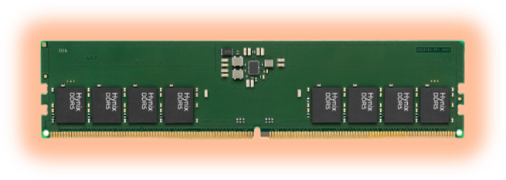Industry trends for 2023

The start of a new year tends to make people feel positive about what’s to come. However, the turmoil of the past few years has made forecasts for 2023 often more conservative than optimistic. The memory chip industry hasn’t been spared of ups and downs. From factory shutdowns during COVID, through the chip supply shortage, (trade) wars, and more, the market predictions and trends in 2020, 2021, and 2022, which were announced at the beginning of a year, ricocheted and had a hard time materializing by the end of it. Will 2023 be similarly turbulent for the semiconductor industry? What trends can we expect in 2023 for memory components for life-long applications?
Testing supply chain resilience
The pandemic and its aftermath exposed vulnerabilities in the semiconductor supply chain. In response to these disruptions companies had to build more resilient supply chains. Entering 2023, governments worldwide have found ways to keep the pandemic under control without jeopardizing their economic markets too much. As the impact of the pandemic itself is dwindling, companies along the supply chain can use their new-built resilience to battle different ongoing challenges, like trade wars and climate change.
While the US Security and Exchange Commission’s new mandatory climate-risk disclosure rule is still on the way, it is clear that the impact of climate policies on the memory chip supply chain has taken off in 2023. The industry’s drive towards innovation holds many opportunities for carbon emission reductions. As new technologies continuously enable the creation of smaller chips with more computing power that consume less energy, Moore’s Law will likely hold in 2023. A combination of trade wars and regional investments stimulated by the CHIPS Act is shifting the geographical landscape of the memory chip supply chain. However, the lion’s share of the foundries being built in the USA as a result of the Act will not yet come online in 2023.
One trend that will become more acute in 2023 is talent shortages. The push for domestic chip production to lower the dependency on supply from overseas might run into some hurdles on the labor front. Finding enough engineers while USA, Europe, and Asia, are simultaneously investing in building or growing their semiconductor infrastructure will be challenging, especially since scarcity in certain expert skill sets is hard to resolve short term.
Balancing demand
Inflation and a looming recession are mainly affecting the demand for consumer products. At the end of 2022, all storage and memory technologies for consumer applications saw a decline in demand, while enterprise-driven industries like industrial robotics, medical technologies, and automotive remained more resilient. Production capacity for memory components grew in parallel as factories ramped up to pre-COVID capacity again, resulting in a complicated dance of supply and demand which is continuing in 2023. As the main market players are adjusting production capacity to avoid or remedy oversupply, market research predicts the current high inventory of certain memory components to be digested by mid-2023. For long-life applications, the focus of foundries on new product lines accelerated by the pandemic shutdowns means the shortages felt in 2022 will persist in 2023. Working with reliable sourcing partners, will save OEMs headaches in 2023. The streak of tumultuous years in the semiconductor industry will likely not come to an end in 2023. However, fitting the spirit at the start of a new year, many opportunities can be found in the supply, demand, and labor challenges ahead.
SMARTsemi is your supply chain partner for DRAM components, eMMC solutions, and SD/microSD Flash Memory Cards for long-life applications. With 20+ years of industry experience, we understand your challenges and have aligned our priorities with yours to simplify your memory chip supply chain for the long run. We know what you need before you need it. Get a jump start and request a sample today.







